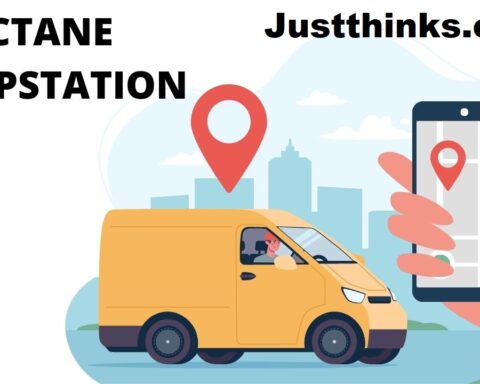Workforce management is a critical aspect of running a successful organization, regardless of its size or industry. It involves everything from scheduling employees to tracking their time and attendance, managing payroll, and ensuring compliance with labor laws. In today’s digital age, workforce software plays a pivotal role in streamlining these tasks, making them more efficient, accurate, and data-driven. This essay delves into the world of workforce software, its various components, and the benefits it offers to organizations, while also exploring the challenges and considerations involved in implementing such systems.
Understanding Workforce Software
Definition and Scope
Workforce software, sometimes referred to as workforce management software, is a comprehensive suite of digital tools and solutions designed to help organizations manage their workforce more effectively. These tools cover various aspects of human resource management, time and attendance tracking, scheduling, payroll processing, and employee self-service, among other functions. The primary goal of workforce software is to optimize workforce operations, reduce administrative overhead, and ensure that an organization’s most valuable resource—its people—are utilized efficiently.
Components of Workforce Software
Workforce software typically encompasses a range of components, each serving a specific purpose in the management of human resources. These components include:
Time and Attendance Tracking
One of the fundamental aspects of workforce software is time and attendance tracking. This component allows organizations to monitor and record employees’ work hours, attendance, and breaks. It helps in calculating overtime, ensuring compliance with labor laws, and managing employee schedules effectively. The accuracy of time and attendance data is crucial for proper payroll processing.
Scheduling
Scheduling is an essential function in workforce management. Workforce software helps organizations create work schedules for their employees, taking into account factors like shift preferences, labor laws, and staffing requirements. It aids in balancing workloads and ensuring adequate coverage during operational hours.
Payroll Processing
Payroll processing involves the calculation of employee wages, tax deductions, and the distribution of paychecks. Workforce software automates this complex task, reducing the chances of errors, ensuring timely payments, and simplifying tax compliance. Accurate and on-time payroll is vital for employee satisfaction and compliance with wage laws.
Leave and Absence Management
Workforce software provides tools for tracking and managing employee leaves, including vacation time, sick leave, and other types of absences. It simplifies the process of leave requests, approvals, and tracking. Proper leave management aids in planning and prevents understaffing during critical periods.
Workforce Analytics
Workforce analytics is all about collecting and analyzing data related to workforce performance, productivity, and labor costs. This data-driven approach helps organizations make informed decisions about staffing, resource allocation, and process optimization. It allows organizations to uncover patterns, trends, and areas for improvement within their workforce.
Employee Self-Service
Employee self-service is a feature that empowers employees by giving them access to their work-related information. This includes viewing work schedules, requesting time off, and updating personal information. Employee self-service not only reduces administrative burdens but also fosters employee engagement and autonomy.
Compliance and Reporting
Ensuring compliance with labor laws and regulations is paramount for organizations. Workforce software helps in automating compliance checks and generating reports for auditing and decision-making purposes. It aids organizations in avoiding legal issues and financial penalties.
Talent Management
Some workforce software solutions also offer modules for talent management. This includes talent acquisition, performance management, and employee development. Such features help organizations manage their workforce more comprehensively, from recruitment to career development.
The Benefits of Workforce Software
Workforce software provides numerous benefits to organizations, helping them improve operational efficiency, reduce costs, and enhance the employee experience. Here are some of the key advantages:
Efficiency and Accuracy
Workforce software automates manual tasks, such as data entry and calculations, reducing the potential for human errors. This leads to more accurate time and attendance tracking, payroll processing, and compliance management. It also streamlines processes, making them more efficient and less time-consuming.
Cost Savings
By automating workforce management processes, organizations can significantly reduce administrative overhead. Fewer resources are required for tasks like data entry and manual calculations, allowing organizations to allocate their resources more strategically. Additionally, the accuracy of payroll processing can help avoid costly errors and legal issues.
Improved Workforce Planning
With workforce software, organizations can plan their workforce more effectively. Scheduling tools help balance workloads, prevent understaffing or overstaffing, and optimize labor costs. Workforce analytics provide valuable insights for decision-making, enabling organizations to align their workforce with their strategic goals.
Employee Engagement
Employee self-service features empower employees by giving them control over their schedules and leave requests. This autonomy can lead to higher job satisfaction and engagement. Moreover, accurate and timely paychecks contribute to a positive employee experience.
Compliance and Risk Mitigation
Workforce software helps organizations stay in compliance with labor laws and regulations. By automating compliance checks and record-keeping, organizations can mitigate the risk of legal issues and financial penalties.
Data-Driven Decision-Making
Workforce analytics provide organizations with valuable data that can inform their decision-making. By analyzing workforce performance, productivity, and costs, organizations can identify areas for improvement and optimize their operations.
Challenges and Considerations
While workforce software offers numerous advantages, its implementation and management come with their own set of challenges and considerations:
Implementation Costs
Investing in workforce software, particularly for small and medium-sized businesses, can be costly. Organizations need to consider the initial setup costs, licensing fees, and ongoing maintenance expenses. However, it’s important to view this as an investment in improved efficiency and reduced administrative overhead.
Data Security
Workforce software handles sensitive employee data, including personal information, time and attendance records, and payroll details. Ensuring data security is paramount to protect this information from breaches and unauthorized access. Organizations must implement robust security measures and compliance with data protection regulations.
User Training
Proper training is essential to maximize the benefits of workforce software. Users, including HR personnel, managers, and employees, need to be well-versed in using the software’s features. Adequate training is necessary to ensure accurate data entry and efficient utilization of the software.
Integration with Existing Systems
Organizations may already have other systems in place, such as accounting software or ERP (Enterprise Resource Planning) systems. Ensuring that the workforce software can seamlessly integrate with existing systems is crucial for data consistency and efficiency.
Scalability
As organizations grow and their workforce expands, the software should be scalable to accommodate the changing needs. This means that the software should handle an increasing volume of data, accommodate new features, and continue to support the organization’s growth.
Conclusion
Workforce software is a vital tool for modern organizations seeking to manage their workforce efficiently and effectively. It streamlines time and attendance tracking, scheduling, payroll processing, and compliance management, ultimately leading to increased efficiency, cost savings, and a better employee experience. While the implementation of workforce software comes with initial costs and challenges, the long-term benefits in terms of accuracy, data-driven decision-making, and workforce optimization make it a worthwhile investment. As organizations continue to evolve in the digital age, workforce software remains a key component of their success, helping them achieve their operational goals while fostering a positive work environment for their employees.






